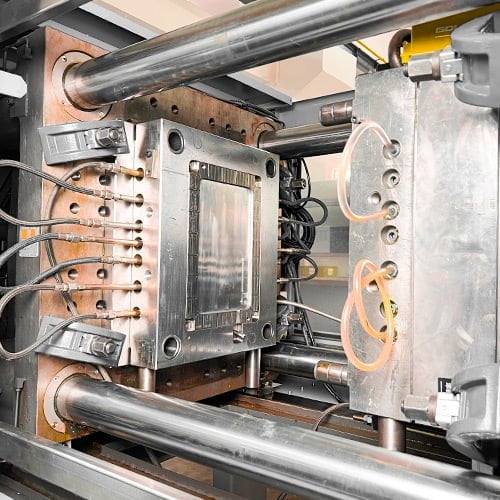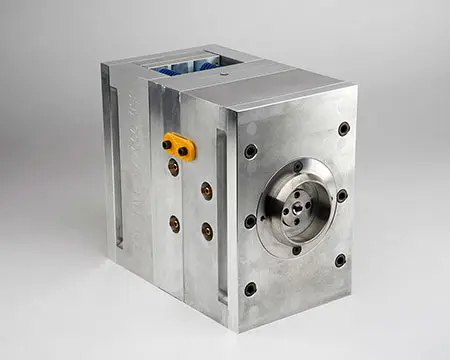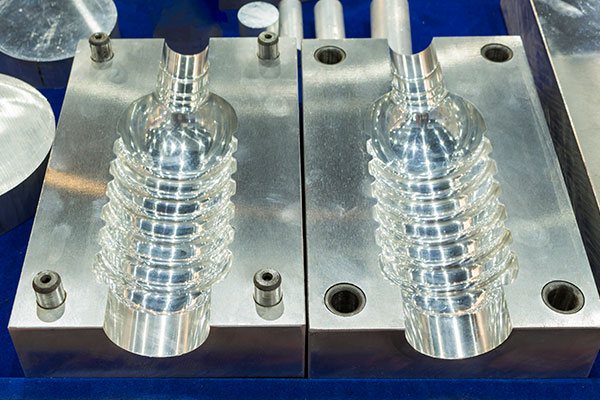Enhancing Item Growth with Advanced Plastic Injection Molding Solutions
Enhancing Item Growth with Advanced Plastic Injection Molding Solutions
Blog Article
Recognizing the Basics of Plastic Injection Molding Procedures
Plastic injection molding serves as a keystone of modern-day production, supplying a methodical method to producing complex parts with accuracy. Discovering these crucial elements can disclose exactly how even minor modifications can lead to considerable improvements in manufacturing end results, raising questions about the potential for technology in this well established process.
What Is Plastic Shot Molding?
Plastic shot molding is a widely made use of manufacturing procedure that transforms thermosetting and thermoplastic products into exact and complicated forms. This technique is preferred for its ability to produce high volumes of the same parts with remarkable precision, making it an important approach in various industries, consisting of automotive, durable goods, and clinical gadgets.
The procedure involves melting the picked plastic material and injecting it into a mold and mildew under high pressure. The mold and mildew, made to the specifications of the desired component, enables the molten plastic to materialize as it cools down and solidifies. As soon as the material has solidified, the mold and mildew is opened up, and the finished component is ejected.
Plastic shot molding supplies several advantages, including decreased waste, uniformity in production, and the capacity to include elaborate styles that might be challenging with other making approaches. Additionally, it supports a wide series of products, each supplying distinct residential properties that can be customized for details applications. As sectors proceed to introduce, plastic shot molding continues to be at the center, allowing the advancement of sophisticated products that meet progressing consumer demands.
The Injection Molding Refine
The shot molding procedure is an advanced method that involves a number of essential stages to produce premium plastic components. Plastic pellets are fed into a heated barrel where they are melted right into a viscous fluid. This molten plastic is then infused under high pressure into a precision-engineered mold, which forms the material right into the preferred type.
When the mold is filled, the plastic is permitted to strengthen and cool, taking the form of the mold and mildew dental caries. Air conditioning time is important, as it impacts the cycle time and the final properties of the shaped component. After enough cooling, the mold opens up, and the finished part is expelled using ejector pins.

Materials Used in Shot Molding
Various materials can be utilized in the injection molding procedure, each offering distinct buildings that provide to details applications. The most generally made use of products include thermoplastics, thermosetting plastics, and elastomers.

Thermosetting plastics, like epoxy and phenolic resins, go through a chemical adjustment throughout the treating procedure, resulting in a stiff, stringent structure. These materials are ideal for applications calling for high heat resistance and architectural stability, typically utilized in electric insulators and auto components.
Elastomers, consisting of silicone and rubber-based products, supply adaptability and resilience. Their one-of-a-kind buildings make them suitable for applications that demand flexibility, such as seals and gaskets.
Additionally, specialized products like bio-based plastics and composites are gaining traction for their click this ecological advantages and improved performance characteristics, broadening the range of shot molding applications in different industries. Understanding the residential or commercial properties of these products is vital for choosing the proper kind for details tasks.
Advantages of Shot Molding
Injection molding stands apart as a very effective manufacturing process that provides many advantages for creating complicated get rid of precision. One of the most significant benefits is the capacity to develop elaborate designs that would certainly be impossible or challenging to achieve with other approaches (Plastic Injection Molding). The process enables see this page detailed features and tight resistances, making certain high-grade elements
Additionally, shot molding is understood for its fast production capacities, making it an optimal option for high-volume manufacturing. When the mold is developed, parts can be produced promptly, minimizing lead times and raising total productivity. This performance not only lowers manufacturing prices but also supplies an one-upmanship in the marketplace.
The flexibility of materials utilized in injection molding additionally improves its allure. A wide array of thermoplastics and thermosetting polymers can be employed, enabling manufacturers to pick products that finest fulfill their particular needs, including toughness, versatility, and warmth resistance.
Moreover, the process lessens waste, as excess material can commonly be recycled and reused. This sustainability element adds to a decreased ecological influence, making injection molding a liable manufacturing option. On the whole, the benefits of injection molding make it a favored approach for several industries.
Variables Impacting Item Top Quality
While countless variables can influence item quality in injection molding, recognizing these elements is critical for accomplishing ideal outcomes. Trick facets consist of material selection, processing specifications, and mold and mildew style.
Product option plays an essential function, as different polymers show unique residential properties that impact flowability, strength, and thermal security. Inadequate material option can lead to problems such as warping or insufficient dental filling.
Processing criteria, consisting of temperature level, stress, and cycle time, should be carefully controlled. Variants in these setups can cause variances in part dimensions and surface area coating. Excessively high temperature levels might cause degradation of the polymer, while insufficient pressure can result in brief shots.
Mold design is just as vital, as it establishes the flow of the molten plastic and the cooling procedure. Improperly created molds might cause unequal cooling prices, leading to dimensional inaccuracies and recurring stresses.

Verdict
Finally, plastic injection molding acts as an essential production procedure that allows the reliable manufacturing of high-grade parts. Mastery of the injection molding process, including the understanding of materials and the impact of different aspects on product quality, is vital for accomplishing optimum outcomes. The advantages of this method, such as cost-effectiveness and design versatility, more highlight its importance across numerous sectors, solidifying its standing as a recommended choice for high-volume manufacturing.
Plastic injection molding serves as a keystone of modern production, supplying a methodical approach to creating complicated components with accuracy.Plastic injection molding uses numerous advantages, consisting of minimized waste, consistency in production, and the capacity to integrate intricate styles that may be testing with various other manufacturing approaches (Plastic Injection Molding). As markets continue to introduce, plastic injection molding continues to be at the leading edge, making it read this post here possible for the advancement of advanced products that fulfill progressing consumer needs
The injection molding procedure is a sophisticated strategy that involves numerous key phases to create top notch plastic components.In final thought, plastic shot molding offers as an important manufacturing procedure that makes it possible for the effective production of high-grade elements.
Report this page